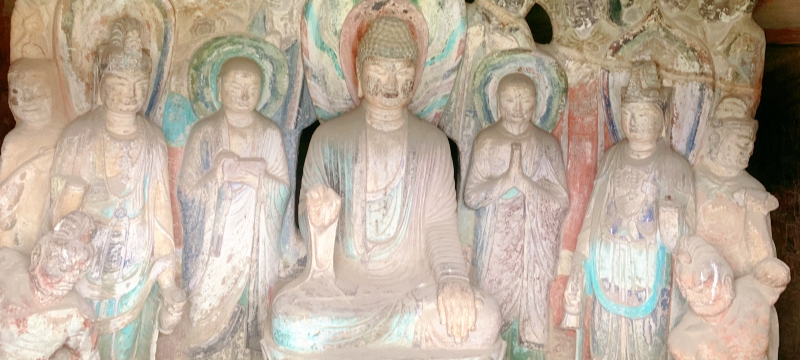
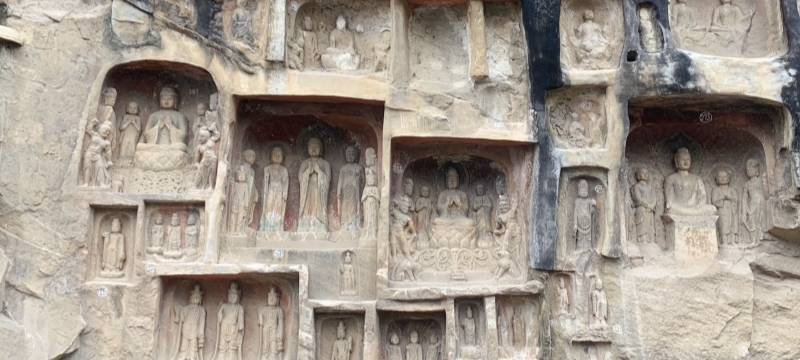
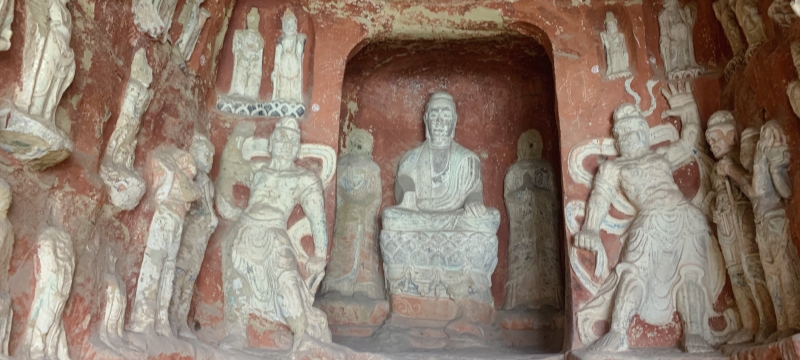
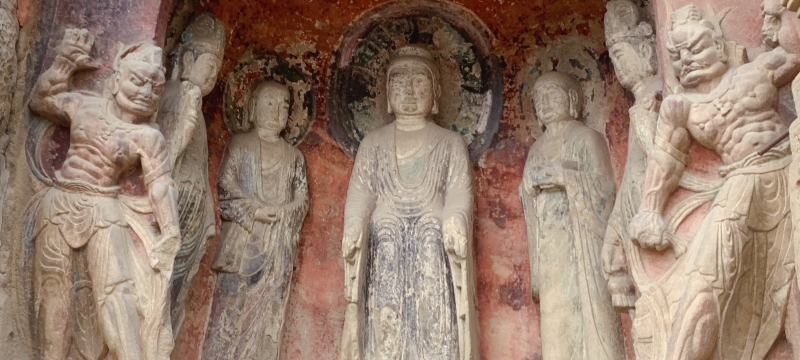
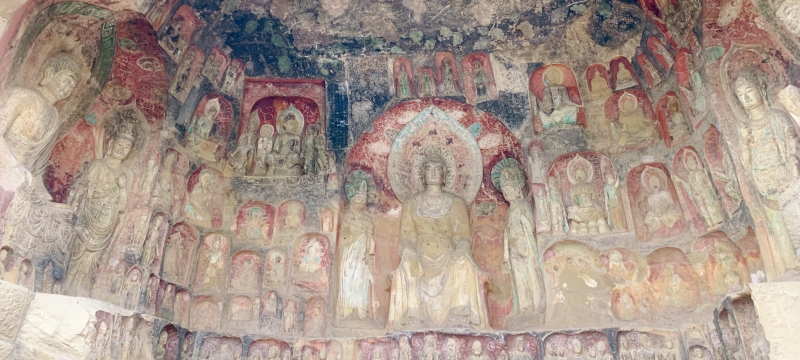





Thousand-Buddha Cliff/ Qianfo Cliff
Carved into the emerald cliffs above Guangyuan, Sichuan, this 1,500-year-old treasure holds over 5,000 exquisitely detailed Buddha statues and inscriptions. A UNESCO-protected masterpiece, it’s a vivid testament to China’s Buddhist heritage, where art and spirituality merge like the Jialing River below.
1. Attraction Introduction
Qianfo Cliff (千佛崖), located along the Jialing River in Guangyuan City, Sichuan Province, is one of China's largest and most exquisite collections of cliffside Buddhist carvings. With over 7,000 statues carved into a 200-meter-long sandstone cliff, it showcases Buddhist art spanning 1,500 years from the Northern Wei Dynasty (386-534 AD) to the Qing Dynasty. The site is particularly famous for its Diamond Throne Pagoda style carvings and the Great Cloud Cave featuring exquisite Tang Dynasty (618-907 AD) sculptures. The cliff face resembles a giant stone "book" of Buddhist art history when viewed from across the river.
2. Historical Significance
The site dates back to the Northern Wei Dynasty (386–534 AD), when Buddhist influence began to spread through China. Over the centuries, more than 1,000 Buddha statues were carved into the cliffs, creating a unique and impressive display of Buddhist art. Many of the statues are in various poses, and some are adorned with intricate inscriptions and paintings that reflect the art and spirituality of the period.
Qianfoya remained an important pilgrimage site for Buddhists, especially during the Tang (618–907) and Song (960–1279) dynasties. The site is particularly famous for its large, well-preserved statues, with some reaching as high as 2.5 meters. The carvings are carved directly into the limestone cliffs, and they are a testimony to the skilled craftsmanship of the artisans of the time.
Today, Qianfoya is recognized as an important cultural heritage site in China, offering a glimpse into ancient Buddhist practices and the artistic expression of early Buddhist stone carvings.
3. Key Sections
Great Cloud Cave (大云洞): The largest grotto (10m tall) with a central pillar carved with 1,000 small Buddhas
Lotus Flower Cave (莲花洞): Features a stunning 3m diameter lotus ceiling carving
Northern Wei Section: Earliest carvings (386-534 AD) showing Indian artistic influence
Tang Dynasty Area: Contains the most refined sculptures with painted remnants
Cliffside Walkway: Offers close-up views of carvings at different heights
4. Recommended Tour Route
Start at South Entrance → View the cliff panorama from observation deck
Walk north along the cliff path (study chronological style changes)
Focus visit on Great Cloud Cave (allow 20 mins)
Continue to Lotus Flower Cave and Tang Dynasty masterpieces
End at North Exit (total visit 2-3 hours)
5. Best Time to Visit
Optimal: April-May & September-October (pleasant weather)
Avoid: July-August (extreme heat) and winter mornings (shadows obscure carvings)
6. Transportation
Location: Qingchuan County, Guangyuan City, Sichuan Province, China
From Chengdu:
By train: high-speed train to Guangyuan (1.5 hrs, 110RMB) → Taxi to site (15 mins, 25RMB)
By car: Self-driving from Chengdu takes ~4.5-5 hours via Chengdu-Mianyang-Guangyuan Expressway (G5).
On Site: Electric shuttle available (15RMB round-trip)
7. Tickets & Fees
Entrance: 60RMB (peak season Mar-Nov), 40RMB (off-season)
Special Access: 300RMB for early morning photography session (6-8am)
8. Important Notes
Preservation Rules: No flash photography allowed in caves
Accessibility: Steep stairs unsuitable for wheelchairs
Nearby Eats: Try local "Jianmen" tofu at cliff-top tea house
Combine With: Visit Huangze Temple (Wu Zetian's birthplace) 5km away
Pro Tip: Bring binoculars to appreciate the upper-level carvings in detail! The morning light (8-10am) provides the best illumination for photography.
